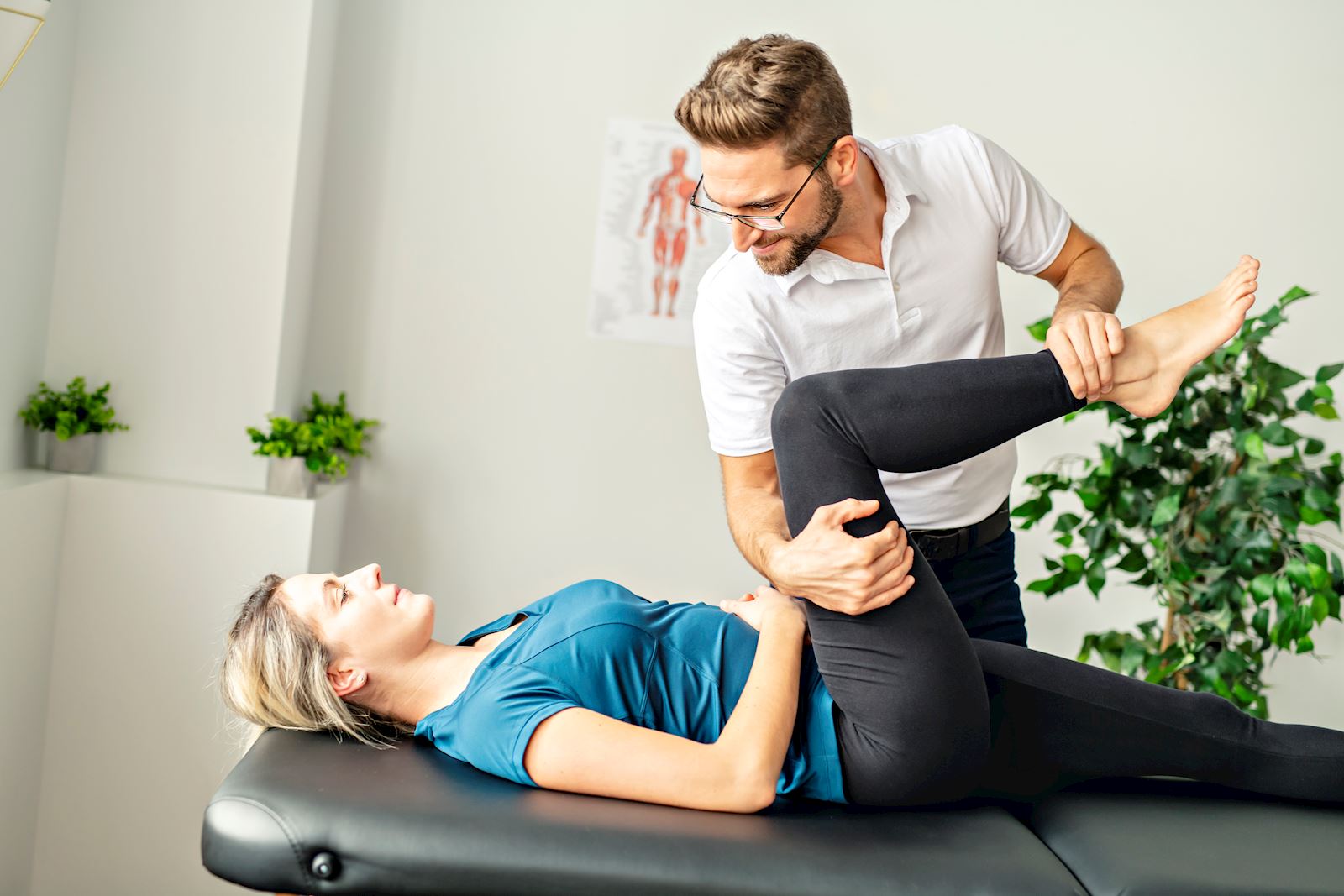The National Association for Continence estimates that 1 in 4 Americans will experience incontinence in their lifetime.
It’s a subject that can be very uncomfortable for people to talk about — even with a trusted healthcare provider. But urinary incontinence is a widespread condition caused by any accidental leakage of urine from the bladder that, in most cases, can be cured with proper diagnosis and treatment.
Urinary incontinence affects both women and men.
Urinary incontinence affects people of all genders, although women are twice as likely to experience incontinence than men.
“The most common cause of incontinence is trauma to the pelvic floor muscles,” says women's health physical therapist Katie Graham, PT. “Often times this happens after pregnancy or childbirth, or after surgery for prostate cancer. Incontinence can also be caused by menopause which leads to a decrease in muscle mass throughout the body.”
There are several different types of urinary incontinence. Stress incontinence and urge incontinence are the most common.
 Stress Incontinence
Stress Incontinence
Any leakage of urine that’s preceded by increased pressure in your abdomen is referred to as stress incontinence. This might happen with coughing, sneezing, or laughing. You can also have symptoms with running or lifting something heavy.
 Urge Incontinence
Urge Incontinence
Urge incontinence refers to a leakage of urine after a strong, sudden urge to urinate. Your bladder begins to spasm and pushes out some urine before you can make it to the bathroom.
 Functional Incontinence
Functional Incontinence
If you are able to control your bladder normally, but due to poor mobility, strength, or awareness of a full bladder you cannot make it to the bathroom in time, this is known as functional incontinence. In this case, you will need to work on your mobility, strength, or awareness to stay continent.
Mixed Incontinence
You might relate to multiple categories listed above you have mixed incontinence. Your symptoms are caused by multiple different factors and require attention to each one in order to get better.
Incontinence isn’t the only bladder problem men and women face.
Incontinence isn’t the only bladder problem you might experience. Many people do not know that urinary urgency and frequency are also problems with the bladder that can be fixed with pelvic floor physical therapy.
 Urinary Urgency
Urinary Urgency
When you gotta go, you gotta go now. You might feel like your urges to urinate come out of nowhere and are very intense. You might feel like you must always be close to a bathroom just in case an urge happens. This is urinary urgency, and this is a condition that is curable with the correct treatment.
 Frequent Urination
Frequent Urination
Going anywhere between four and eight times in one day is a normal frequency. At night, you should be able to sleep through the night and get a good, solid eight hours without having to get up. But occasionally, you might have to get up once to pee.
If you are urinating more frequently than every 2 hours or getting up to urinate more than twice a night, then you have frequent urination which is treatable.
Physical therapy can cure your bladder control issues.
Physical therapy is a conservative treatment for urinary incontinence and other bladder issues. But it’s so much more than muscle strengthening. Muscle weakness may be a contributing cause to your problem, but often it’s more about coordination and muscle imbalance. You may also have tense and overly active muscles which are contributing to your condition.
A physical therapist can figure out the underlying causes of your bladder problems. You may benefit from relaxation techniques, behavior modification or bladder retraining exercises, especially if you have an overactive bladder or urge incontinence. You may need to strengthen your core, improve your posture or exercise muscles you didn’t even know you had!
The muscles around your hips and pelvis are very close in proximity to the pelvic floor — the muscles that control the flow of urine. You can actually get some carryover to your pelvic floor muscles by strengthening your hips and core.
“The pelvic floor muscles themselves are deeper and harder to target through traditional strength training,” Katie explains. “Strengthening them isn’t as easy as picking up some weights. But doing pelvic floor exercises can help tone these muscles and prevent urinary incontinence. That’s done primarily with Kegels, and then combined with better coordination of the deep muscles that make up your inner core.”
 How to Do Kegel Exercises Correctly
How to Do Kegel Exercises Correctly
A Kegel is an active contraction of the pelvic floor and, if done regularly, can help you build stronger, thicker pelvic floor muscles. People with female anatomy have the best luck when they think about “squeeze your muscles like you have to pass gas but do not want to”. Those with male anatomy may do better thinking about “retract the penis and elevate our testicles”.
To confirm if you are doing Kegels correctly, you can try stopping urination midstream or holding back gas. If you succeed: that’s your pelvic floor at work! Then, lie down and repeat that movement to do a proper Kegel.
Some people may have trouble finding muscles this way. In that case you might need to see a pelvic floor physical therapist who will help you find your muscles and train them appropriately.
It’s easiest to lie down at first, but you can do Kegels anytime and anywhere, whether you’re cooking a meal or sitting at the office. So, it should be easy to work two to three sets of 10 repetitions into your day. Try holding the Kegel for about three seconds each time and resting for three seconds between each repetition. As your pelvic floor muscles get stronger, hold the contraction for longer until you’re able to do so for 10 seconds.
 How to Coordinate Your Inner Core Muscles
How to Coordinate Your Inner Core Muscles
Once you’ve found your pelvic floor muscles and are able to activate them properly, it’s time to coordinate them with the rest of the inner core muscles. All of these muscles work together to manage pressure in your abdomen. And it all starts with diaphragmatic breathing, as the diaphragm and deep abdominal muscle are the other muscles that make up the inner core.
- While lying down, take a breath in, focusing on a gentle expansion of your lower ribcage and abdomen. As you do this, gently ‘let go’ of your Kegel.
- On the exhale, gently squeeze and lift your pelvic floor muscles as your abdomen and lower ribcage draw back in.
- Keep your breathing relaxed and quiet, making sure not to exaggerate or force these movements.
With a regular routine of Kegels and diaphragmatic breathing, you can begin to see results in a few weeks.
Unfortunately, it’s not all cut and dried for everyone. Maybe you’ve tried Kegels, and your symptoms haven’t improved or have gotten worse. Or you might not be completely cured of your incontinence and bladder issues.
If that’s the case, Kegels are probably not what your body needs and are not recommended. But other forms of pelvic physical therapy can help. Getting an evaluation from a pelvic floor physical therapist can help you determine the best course of action for your body and symptoms. Bladder control problems can feel scary and embarrassing, but you are not alone in navigating healing and recovery from incontinence.


